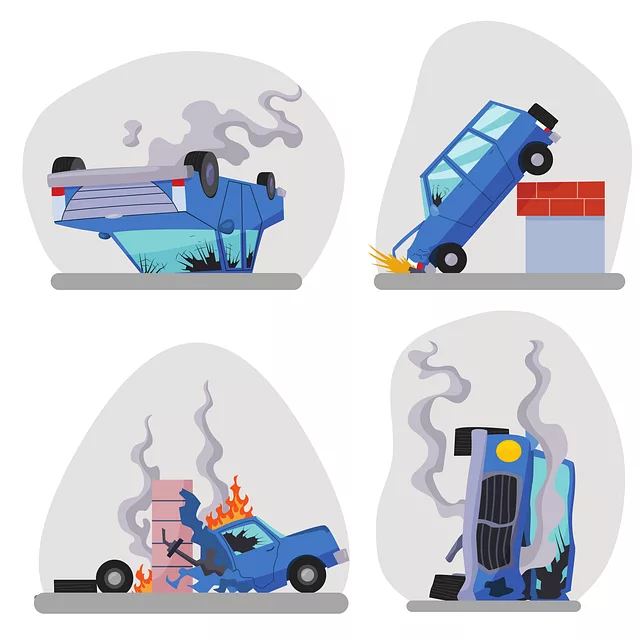In urban areas like Manhattan and The Bronx, where construction sites are prevalent, cyclists face unique challenges due to construction site negligence. Despite having specific rights under traffic laws, shared roads and active construction zones pose significant risks. Cyclists must be vigilant about inadequate signage, narrowed lanes, and worker movements, while contractors are responsible for ensuring safe conditions. Effective management and better integration of urban planning with safety practices are crucial to protect cyclists' rights of way and create a secure cycling environment in The Bronx, addressing pressing construction site negligence issues.
In Manhattan, cyclists face unique challenges navigating a bustling urban landscape. This article delves into the intricate web of cyclist rights and safety, with a specific focus on construction sites—a significant factor in shaping their right of way. We explore The Bronx as a case study, highlighting successful cycling infrastructure and instances of negligence. Additionally, we address responsibilities and solutions for mitigating construction site mishaps, providing insights crucial for both riders and authorities alike.
- Understanding Cyclist Rights and Safety in Manhattan
- Construction Sites and Their Impact on Cyclists' Right of Way
- The Bronx: A Case Study in Cycling Infrastructure and Negligence
- Holding Responsibilities: Addressing Construction Site Mishaps
Understanding Cyclist Rights and Safety in Manhattan

In Manhattan, cyclists have specific rights and protections under traffic laws. Understanding these rights is crucial for both riders and motorists to ensure safe navigation on the city’s bustling streets. Cyclists are considered vehicle operators and have the same rights as drivers, including the right to travel in the same direction as other traffic and the right of way at intersections when they’re turning left or right.
Safety becomes a paramount concern, especially with construction sites prevalent across Manhattan, The Bronx, and other areas. Cyclists must be vigilant around these sites where lanes may be narrowed or altered. Negligence on the part of construction site managers or workers can pose significant risks to cyclists. Familiarizing oneself with local laws and staying alert while riding is essential to mitigate potential hazards and ensure a secure cycling experience within urban environments.
Construction Sites and Their Impact on Cyclists' Right of Way

In Manhattan, understanding the right of way for cyclists is paramount, especially when navigating through construction sites. These sites often present unique challenges for bicyclists due to reduced lanes, temporary road closures, and shifting traffic patterns. When a construction site is poorly managed, it can lead to serious accidents and infringe upon a cyclist’s right of way.
The Bronx, known for its diverse neighborhoods, has seen an increase in construction activity, which has raised concerns among local cyclists. Negligence on the part of contractors or developers, such as failing to provide adequate signage, proper barriers, or clear routes for cyclists, can have severe consequences. Cyclists may be forced into narrow streets or face unexpected hazards, putting their safety at risk. It’s crucial that construction sites are managed with both public safety and the rights of vulnerable road users like cyclists in mind.
The Bronx: A Case Study in Cycling Infrastructure and Negligence

In The Bronx, a thorough examination of cycling infrastructure reveals both promising initiatives and glaring negligence. While recent efforts have seen the installation of bike lanes and protected pathways, an alarming number of hazards persist, particularly around construction sites. These sites often leave behind unfinished or poorly maintained paths, posing significant risks to cyclists navigating the area. The lack of proper signage, inadequate lighting, and haphazardly stored construction materials create a hazardous environment that puts cyclists in dangerous positions.
Construction site negligence is a pressing issue that demands attention. Cyclists, already vulnerable on the road, face added challenges when construction activities fail to prioritize their safety. This disconnect between urban planning and construction practices results in subpar cycling conditions, undermining The Bronx’s potential as a bike-friendly neighborhood. Addressing these issues is crucial for fostering a more inclusive and secure environment for cyclists.
Holding Responsibilities: Addressing Construction Site Mishaps

In Manhattan, cyclists navigating the streets must adhere to specific rules and responsibilities, especially at construction sites. These worksites often present unique challenges for riders due to limited visibility, debris on the road, and unpredictable worker movements. Cyclists have a shared duty of care with motorists; they must exercise reasonable care while riding, including obeying traffic signals, using hand signals when changing lanes or stopping, and keeping a safe distance from other vehicles and pedestrians.
When it comes to construction sites in The Bronx or elsewhere in Manhattan, cyclists should be especially vigilant. Construction site negligence can lead to severe accidents, often resulting in injuries for the cyclist. It’s crucial that both workers and riders are aware of each other’s presence and respect the designated work zones. Cyclists should exercise extra caution when passing through active construction areas, following local laws, and being mindful of potential hazards to ensure a safe ride.
In navigating Manhattan’s bustling streets, cyclists face unique challenges, particularly at construction sites. Understanding and enforcing their right of way is crucial for ensuring safety. The case study in The Bronx highlights successful cycling infrastructure but also exposes the dangers of construction site negligence. Holding responsible parties accountable for mishaps is essential to fostering a culture of respect and care for all road users, ultimately revolutionizing cycling safety across the city.
